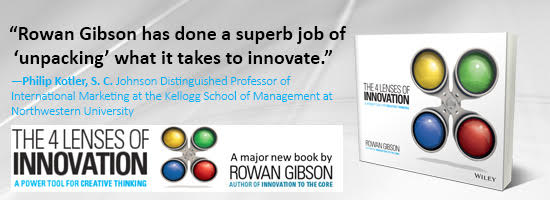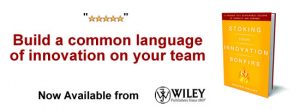Turn Your Organization into an Idea Factory: part II
 How to solicit ideas from employees to drive engagement and innovation
How to solicit ideas from employees to drive engagement and innovation
The most effective way of driving innovation at an organization, while ensuring employees are engaged, is by providing them with a platform where they can share their feedback and ideas directly with decision-makers.
In part one of this piece, I discussed four factors that make an employee idea system successful. This piece will focus on the remaining four.
Enabling technology
One research paper reviewed looked in depth at the key components of an electronic Employee Suggestion Management System (ESMS). The paper highlighted the following components as important capabilities:
- An accessible interface for submitting suggestions
- A dynamic routing capability, which would (a) direct a suggestion to the person(s) best qualified to comment on it, and (b) direct comments to the other stakeholders, including the initiator of the suggestion and the ESS administrator
- A central knowledge repository wherein suggestions and feedback could be deposited and discussed in an open, interactive forum
- Information about stakeholders and originator knowledge and preferences
- A mechanism for monitoring the progress of suggestions through the system
- Support for an ESMS administrator
The first point relates to something covered earlier in this paper (making it easy to submit ideas). The other points are all related to increasing speed, efficiency and quality of feedback and evaluation. For smaller organizations that can manually route ideas to the best person, provide feedback and update employees on the progress of the idea, technology may play a smaller role. As a small company or startup, ideas flow naturally. If you have a good idea you can easily talk to the person responsible. Sharing happens naturally and good ideas get to the right people more easily.
But for larger, more complex organizations, having the right technology in place can be essential to sharing ideas, providing timely feedback and moving quickly to act on ideas. Sharing becomes difficult because of geographic, departmental or functional silos. Knowing who the best person is to evaluate or implement an idea may not be clear.
At what size does technology become important? There is no clear cut-off for when technology becomes a significant value add to the program. In addition to size of organization, other factors such as what role the technology will play, having a distributed workforce etc. have a significant impact.
Setting the goals and objectives for the idea program
In world class suggestion systems employees are aware of the business improvement goals5. The primary focus is toward improving one’s own job or work area as it relates to the larger business goals. Reduce defects 50 percent, reduce cycle time 30 percent, and improve customer service levels as measured through Net Promoter Score (NPS are examples of goals or key results from a strategic plan that an idea management program can be focused on.
There is a trade-off and balance that needs to be struck between having too open-ended an idea program and introducing too many qualifiers and parameters to get more on-point ideas. Setting good goals and objectives is one effective way to get ideas that are more likely to impact key business results. Good goals and objectives can also help speed evaluation, feedback and implementation.
Perhaps most importantly, taking the time to think through objectives carefully ensures that good ideas will find the budget and resources needed to move through to implementation. It will also help with metrics and reporting as you can better align key metrics from the idea program with core objectives being used in regular cadences to manage the business.
Persistence
Patience and persistence on the part of management is an important trait of successful idea management programs. In a literature review looking at critical success factors, it was highlighted that suggestion systems rarely become a roaring success overnight. The time taken to reach a point where an effective evaluation of the system can be made could be anything up to three years. Management should exercise patience and not expect tangible and meaningful results within a period of one year.
One of the papers we reviewed presented components of a maturity model, which looked at the presence of key processes at the organization which were key to the success of an idea program. It suggests five building blocks: Leadership and Work Environment, System Capability, System Effectiveness, Organizational Encouragement and System Barriers, each of them characterized by several relevant indicators and an assessment/grading scale in order for an organization to be able to determine the maturity level of their Employee Suggestion Scheme as: Initial stage, Development stage or Advanced stage. The list of items is quite exhaustive and will leave you with a subjective (vs. objective) way to look at maturity. In this respect, the tool is potentially more useful as a checklist for an administrator vs. a proper objective model for assessing performance and maturity based on benchmarks.
Whether you use one of the maturity models presented in the appendix or create your own, make sure to set realistic expectations of success for various stages of development of your idea program.
The importance of culture and support from organizational leaders
Simply put, employees must know the suggestion drive has management’s commitment, a factor multiple studies identify as the “cornerstone†of a successful idea management program. This was the other consistent conclusion from all the studies we reviewed (the first being a lack of timely feedback).
Research shows that management and executive leaders need to publicly show their backing if employees are to believe it will be taken seriously. It’s also been noted that to secure buy-in from higher-ups, the idea management program must focus on key strategic priorities that leaders care about.
A key component of getting leadership support is the right reporting and tying this to core objectives.
For more resources, please visit: https://info.soapboxhq.com/innovation
image credit: ometria.com

Wait! Before you go…
Choose how you want the latest innovation content delivered to you:
- Daily — RSS Feed — Email — Twitter — Facebook — Linkedin Today
- Weekly — Email Newsletter — Free Magazine
 Jacqueline Zhou is the innovation expert at SoapBox Innovations, a SaaS innovation management company. An avid believer in tapping into the collective genius of communities, she shares her innovation insights on the SoapBox Innovations blog and @SoapBoxHQ
Jacqueline Zhou is the innovation expert at SoapBox Innovations, a SaaS innovation management company. An avid believer in tapping into the collective genius of communities, she shares her innovation insights on the SoapBox Innovations blog and @SoapBoxHQ
NEVER MISS ANOTHER NEWSLETTER!
LATEST BLOGS
How Small is Too Small?
When it comes to a hotel room, how small is too small. There are several new entrants into the hotel…
Read MoreMost Successful Loser in History
I came across an interesting branding article on a BusinessWeek blog the other day about Al Gore, and I have…
Read More


